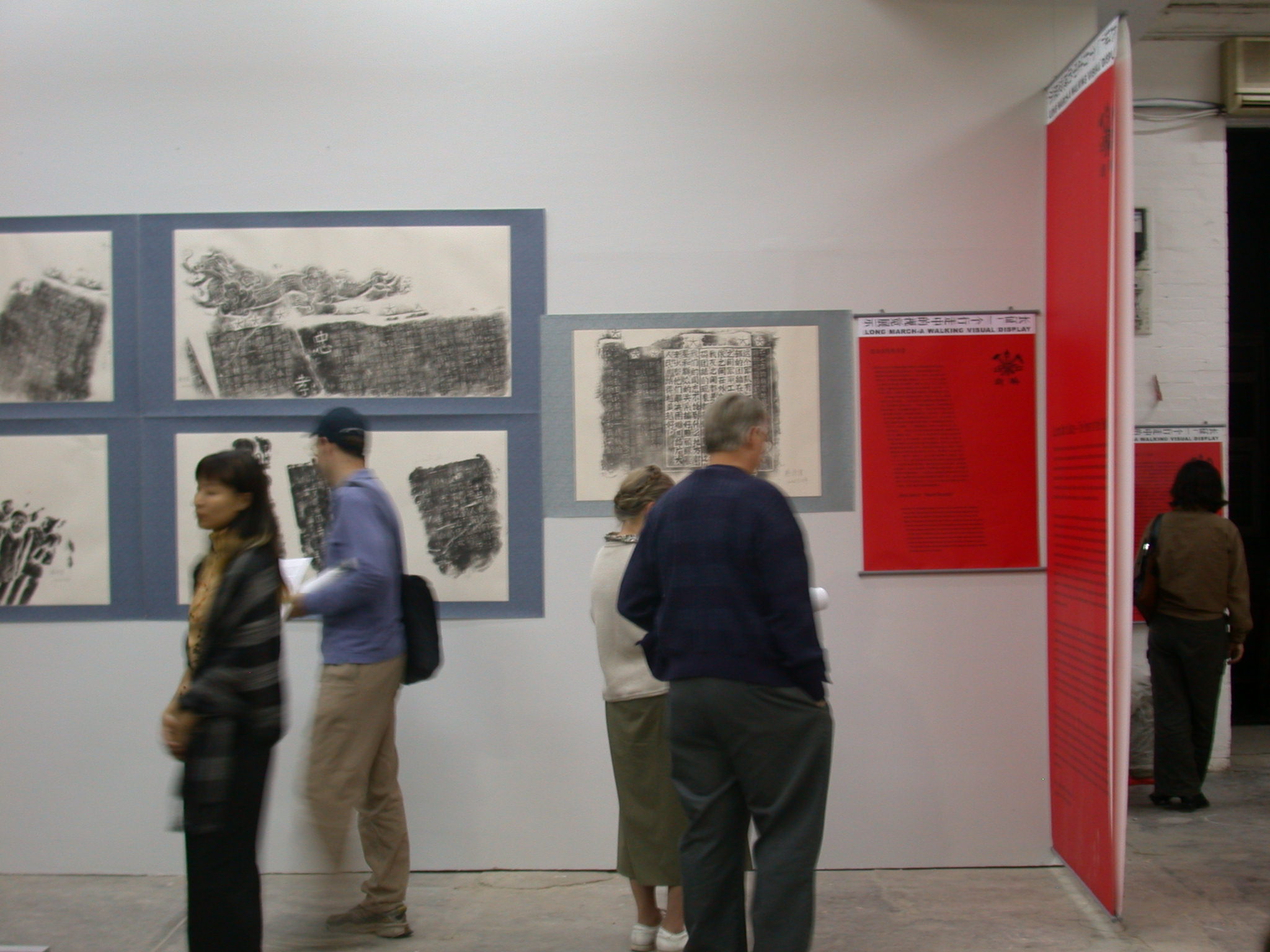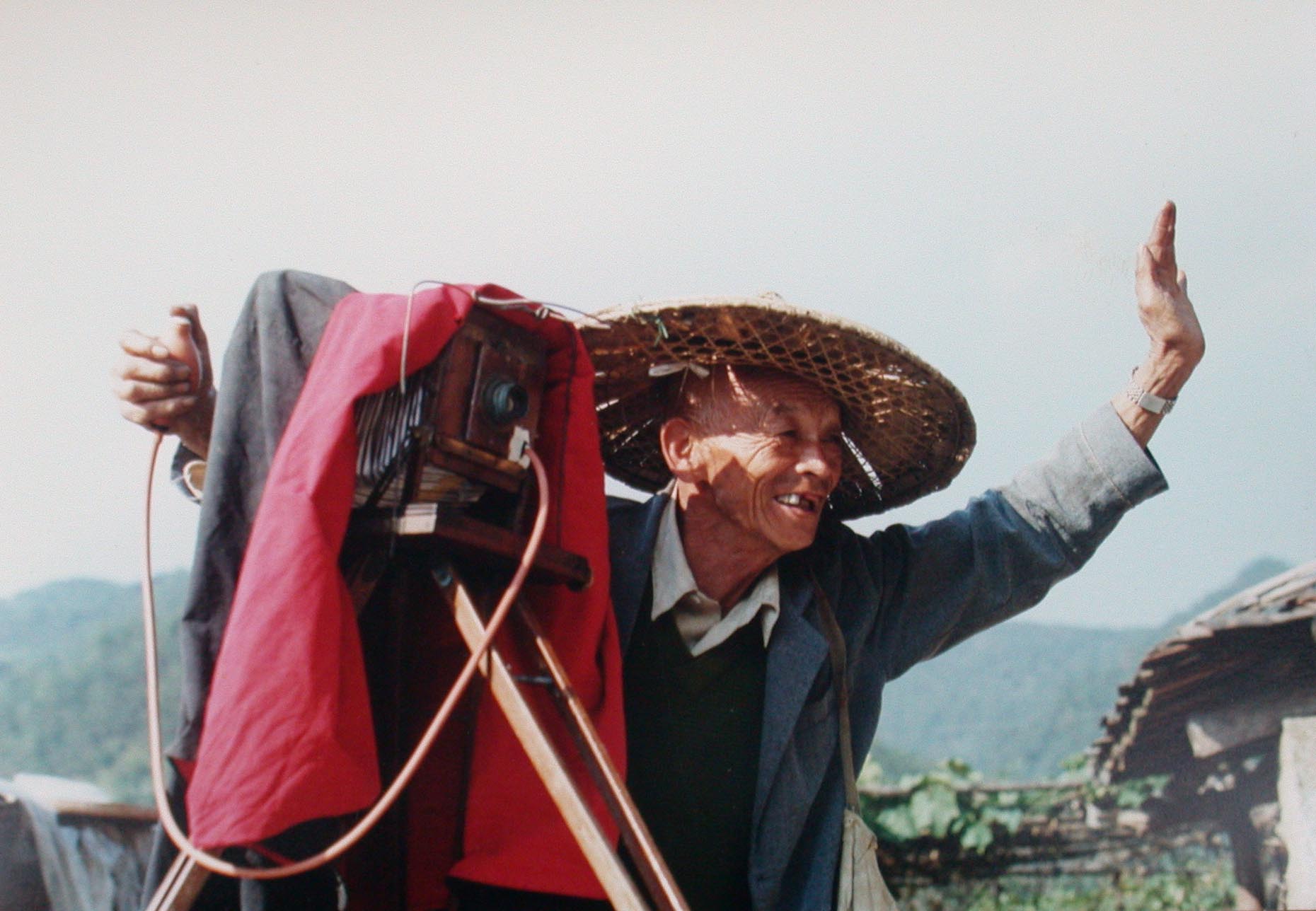The Power of the Public Realm
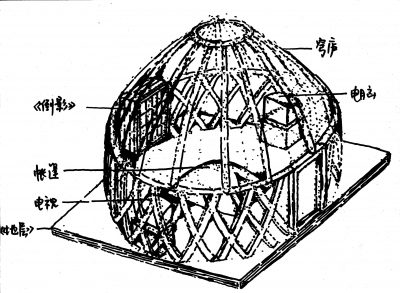
Phase VI – Yue Luping: Separate Paths
The Power of the Public Realm
Time: Mar.26 –Apr.18, 2004
Location: Xiaocheng Village “Long March Space”, Yanchuan County; 25000 Cultural Transmission Center, Beijing
Artist: Yue Luping
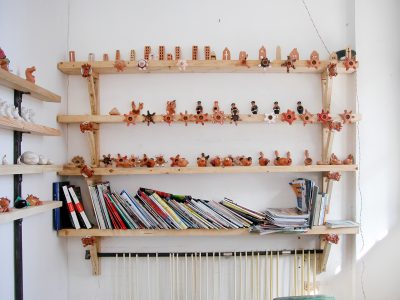
Phase V – Liang Shuo: Sculpture Toys/Temple Fair
The Power of the Public Realm
Time: Feb.20 – Mar.21, 2004
Location: 25000 Cultural Transmission Center, Beijing
Artist: Liang Shuo

Phase IV – Unknown and Anonymous
The Power of the Public Realm
Time: Jan.01 – Feb.10, 2004
Location: 25000 Cultural Transmission Center, Beijing
Artist: Unknown and Anonymous
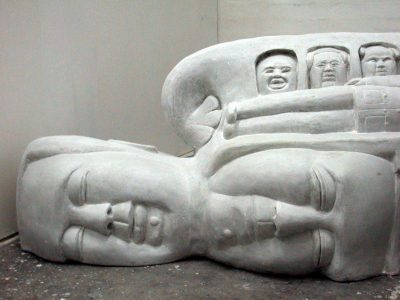
Phase II & III – Wang Wenhai
The Power of the Public Realm
Time: Nov.01 – Dec.31,2003
Location: 25000 Cultural Transmission Center
Artist: Wang Wenhai
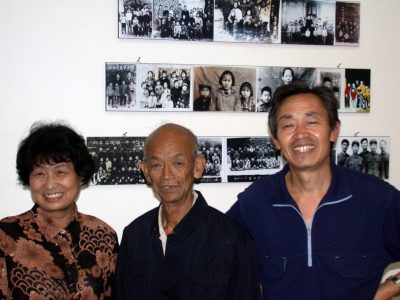
Phase I Guo Fengyi, Jiang Jiwei, Li Tianbing, Wang Wenhai
The Power of the Public Realm
Time: Sep.18 – Dec.20, 2003
Location: 25000 Cultural Transmission Center, Beijing
Aritsts: Guo Fengyi, Jiang Jiwei, Li Tianbing, Wang Wenhai
Phase I Guo Fengyi, Jiang Jiwei, Li Tianbing, Wang Wenhai
The Power of the Public Realm
Time: Sep.18 – Dec.20, 2003
Location: 25000 Cultural Transmission Center, Beijing
Aritsts: Guo Fengyi, Jiang Jiwei, Li Tianbing, Wang Wenhai
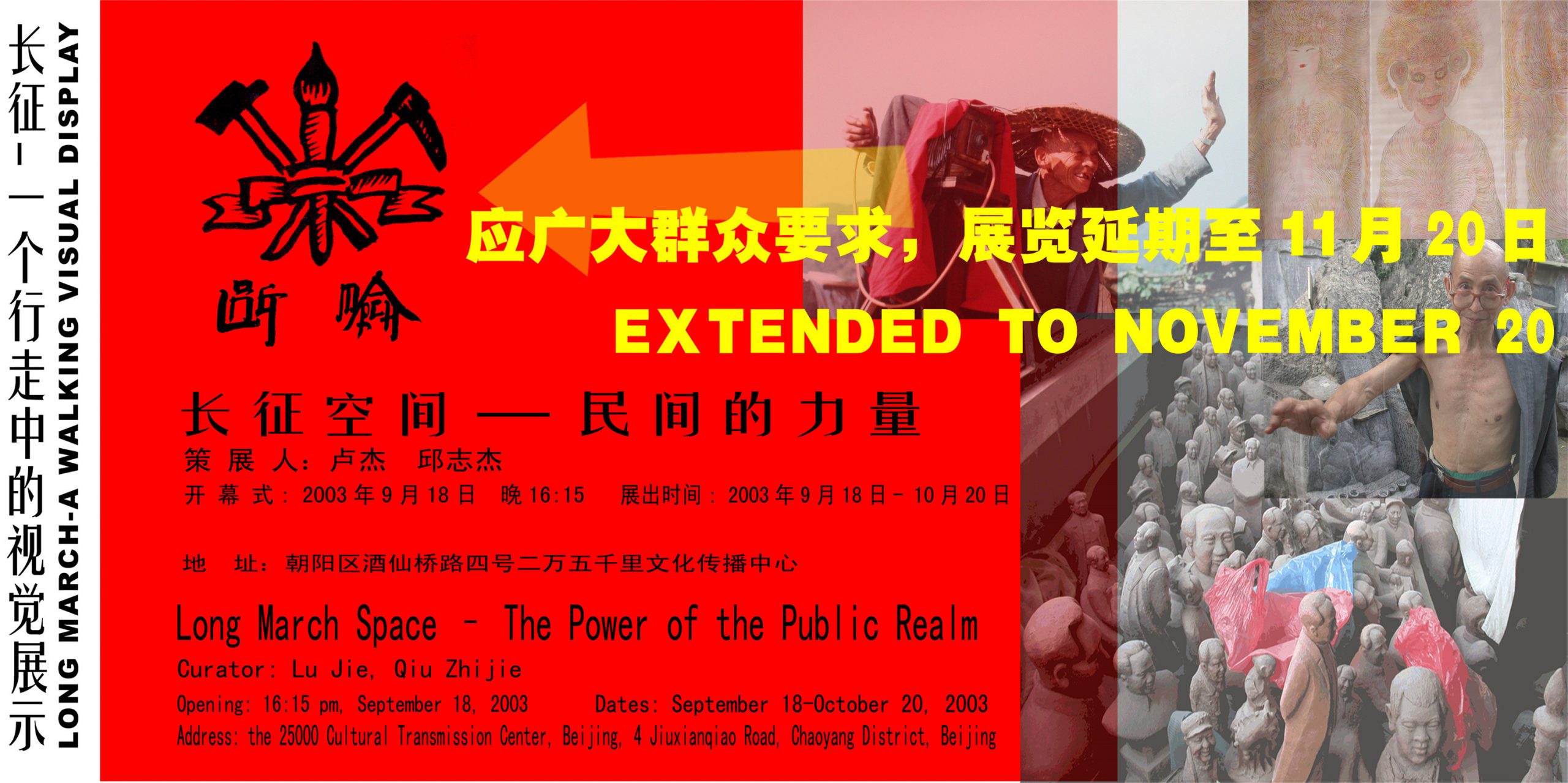
The 25000 Cultural Transmission Center, Beijing, also known as The Long March Space, proudly present Long March Space – The Power of the Public Realm, a long-anticipated exhibition. One major aim of the Long March project has been to re-appraise public space, to research and document public resources and to study and exercise the connection between display culture and artistic originality. The project also takes as its aim an exploration of practice and theory, arts and text and audience and works, all on the basis of the correlation between arts and life, individuals and the collective society. The goals of The Long March project are reflected in their criticism towards the ahistorical attitudes that characterize contemporary art in China as represented by elite culture.
The four artists featured in The Power of the Public Realm are key participants in the Long March project, where folk visual culture and elite artistic production come to terms. Master Li Tianbing, a villager of western Fujian Province, a former revolutionary base, is a Guinness record-holder and is famous for taking and developing photos using only natural light. He took part in the first site of The Long March, held in Ruijn, themed “Utopia and Chinese Context.” Jiang Jiwei, the “Maxim Mountain Creator,” is known for his carvings of quotations and images into a Quanzhou mountainside. His work was a major site at the third stop of the Long March (Roads and Borders/Translation and Transition). In Lijiang and Lugu Lake, the sixth site of the Long March, the high-spirited works of retiree Guo Fengyi of Shanxi were featured as part of a dialogue between Chinese feminist artists and Judy Chicago. Wang Wenhai, a retired guide of the Yan’an Revolutionary Museum, is also a participant of the current exhibition. He has created 1200 sculptures of Chairman Mao over the last twenty years. Next year, he will be a highlight the latter part of the Long March, though his collaboration with the Long March began over a year ago.
The Long March faces multiple issues. First are the pros and cons of directly exporting contemporary Chinese art “from inside-out” to international exhibitions and markets. Second is the way in which Chinese contemporary art superficially adopts practices of the international art system without criticism. Western practices are adopted though they may not be suitable for contemporary Chinese art and may, in fact, be harmful. Third are the continuous discussions of post-colonial theory without developing or adding anything new to the theoretical debate. The fifth issue involves the tension and gap between the idealism of the newly formed Dashanzi Art Zone and the surrounding community. The Long March Space exists as a ground to balance these issues. Its focus is to contextualize the lives of Chinese artists through their works. Personal space, individualism and social environment are an inseparable part of the lives of the four folk artists participating in the current exhibition. They challenge our conception of what defines an “artist.”
The discourse generated by the historical Long March and the visual representation of folk life following the revolution demonstrated that elite art and folk art could co-exist and bond in an interactive and dynamic way. The success of this time period proved to us that the tension we are experiencing between art and society and the anxiety of the Chinese art community towards the West in recent times is not necessary when facing the conflict between the traditional and modern. Hence, as we bring art to the public realm, we also bring “folk-art” and “non-art” into our space. We hope that the public’s adoption of contemporary artistic language and the representation of their life and art from a contemporary perspective can create a dialogue focusing on “what is art and what is contemporary.”
(Excerpted from the original press release)
Installation View
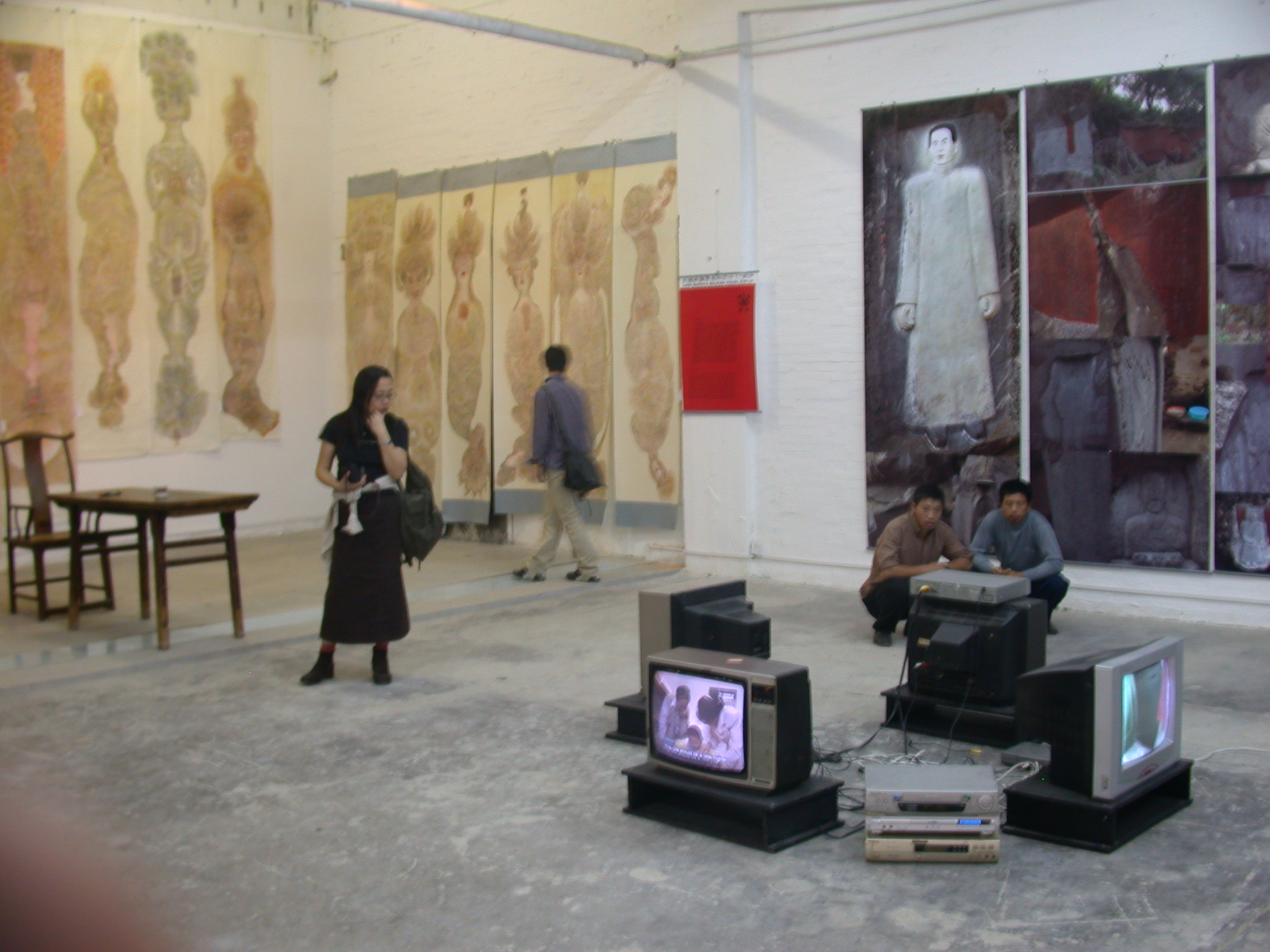
Wang Wenhai, Li Tianbing and visitors watch Guo Fengyi painting on site
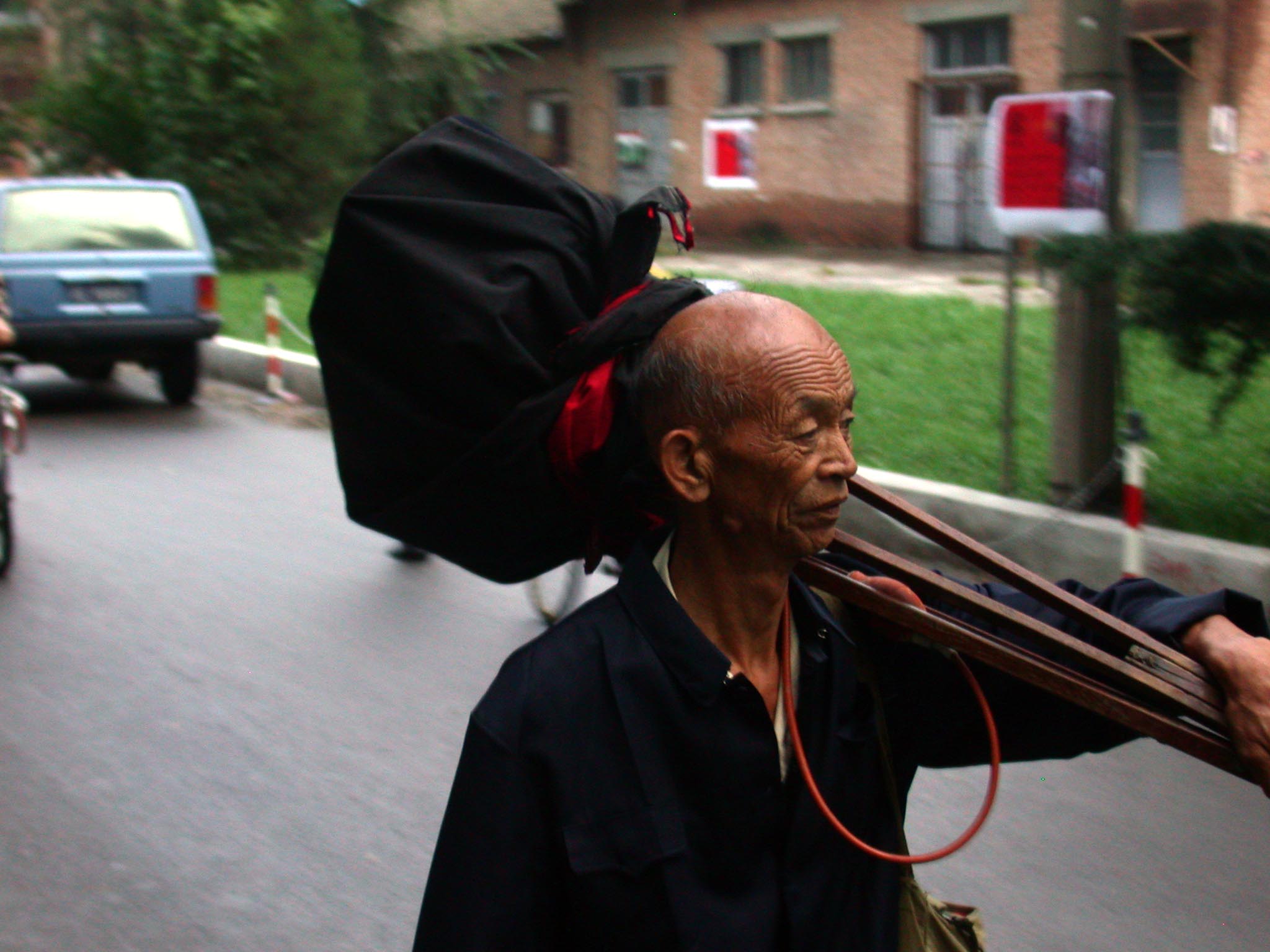
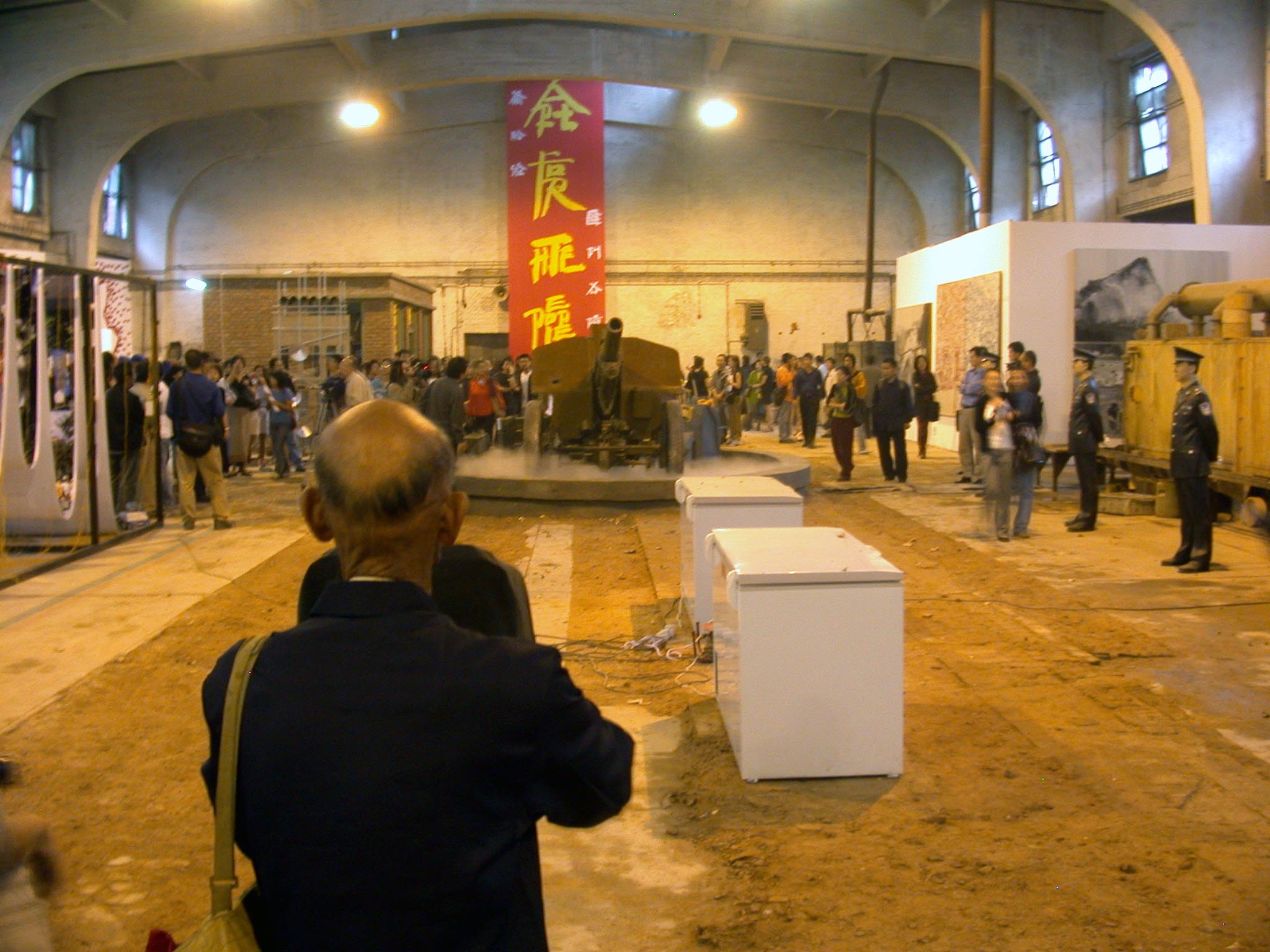 Li Tianbing wanders and photographs the Dashanzi Art District
Li Tianbing wanders and photographs the Dashanzi Art District
Li Tianbing
Li Jincheng’s photographs of his father Li Tianbing
Li Tianbing fell in love with photography when he was a teenager back in the 1940s. He stole a cow from his family and walked for three days until he arrived in the city, where he bartered the cow for a UK-made camera. Ever since that day, he has been taking pictures for residents in neighboring villages, using that same old camera. Wedding days, political movements, graduation ceremonies, changes brought along by reform, folk customs and traditions are all subjects of Li’s photography. He is a legendary figure amongst villagers who sing songs about him. The mountainous area in Fujian where he lives lacks electricity. Because of this, Li develops and enlarges his photographs with light from the sky that filters down his chimney. In addition, his cow barn also serves as a dark room. He opens the wooden door of the barn and exposes his pictures with the light coming through the surrounding bamboo jungle. His calculation of exposures is so precise that it happens within 1/2 second. Li has taken more than 300,000 photographs using this method and upholds a Guinness record in “taking the largest number of photographs with natural lights and resources.” Li arrived in Ruijin to join the Art Long March. He photographed the first site of the Long March and held his solo exhibition in the former Soviet Post and Telecommunication Ministry.
Jiang Jiwei
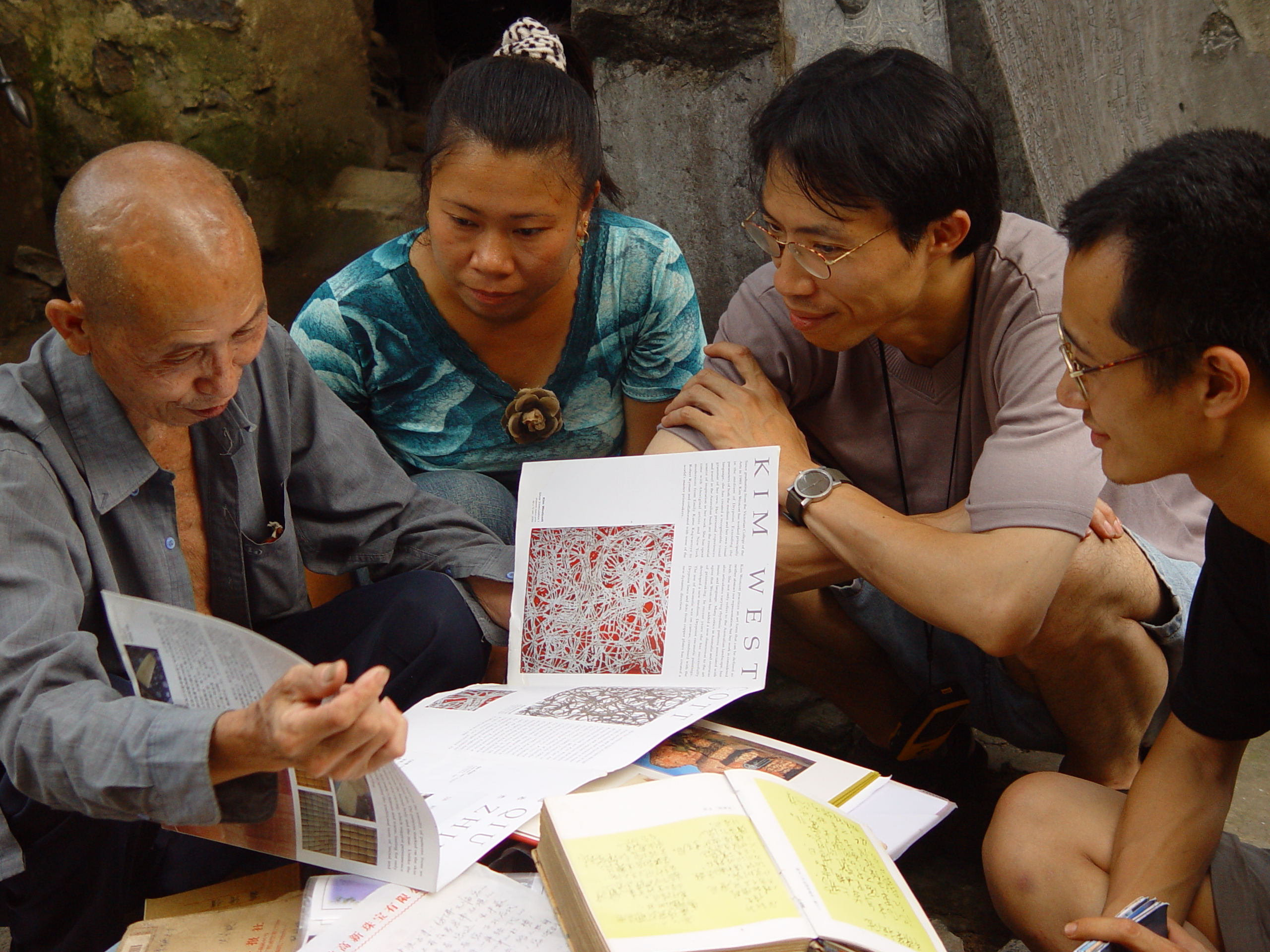 Jiang Jiwei at “Long March – A Walking Visual Display”- Site 3
Jiang Jiwei at “Long March – A Walking Visual Display”- Site 3
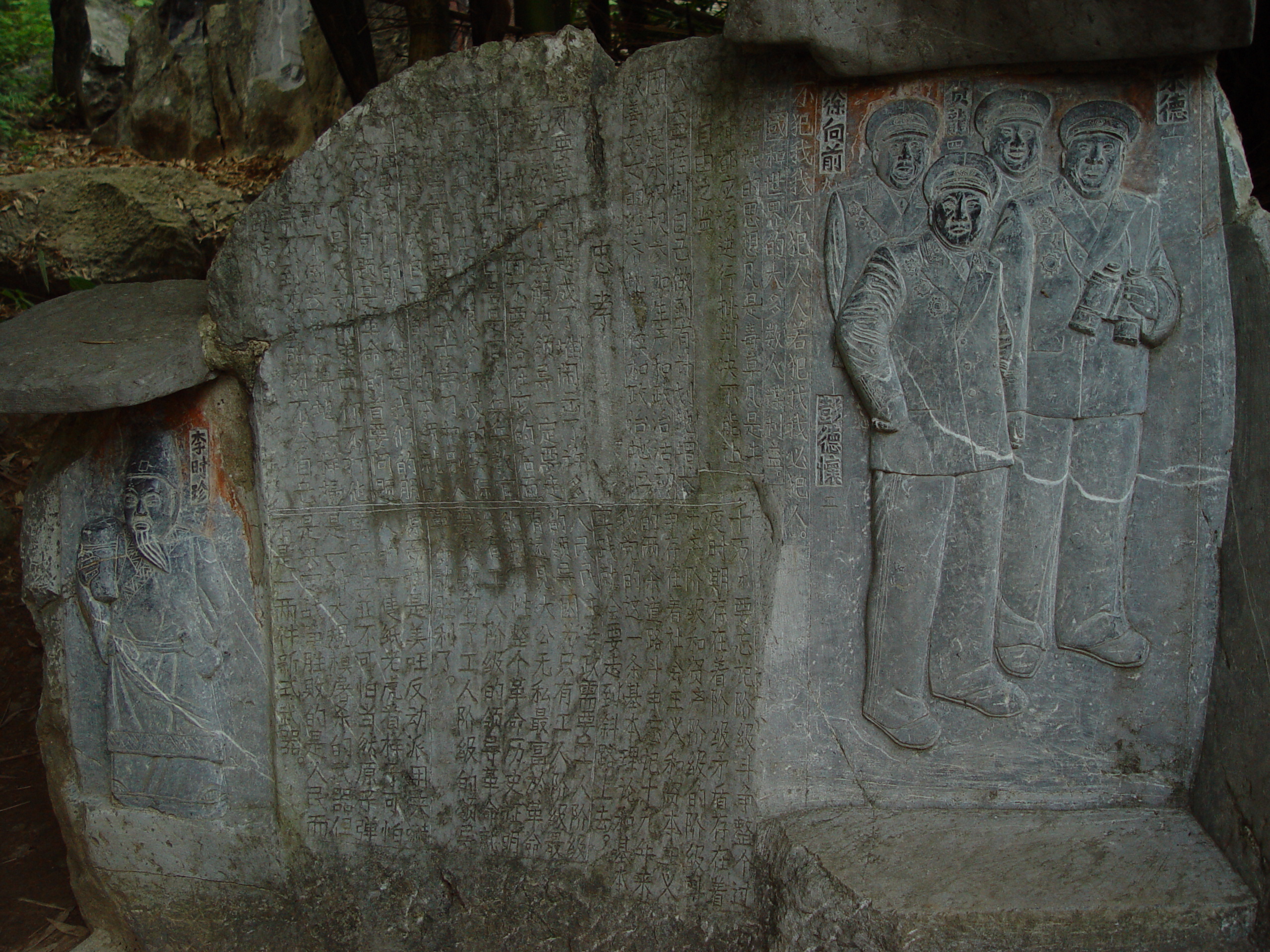 Jiang Jiwei’s Maxim Mountain
Jiang Jiwei’s Maxim Mountain
Quanzhou is in northeastern Guangxi Province and a Long March site. A legendary old man has been carving text and figures into a mountainside opposite his house since the 1970s. The mountain is covered with busts of Lu Xun, Lei Feng, world leaders, commanders and foreign friends of China. In addition, he has carved a great number of excerpts of quotations by Chairman Mao as well as post-door-opening-and-reform government policies. Every figure and quotation has been neatly carved into the stone. It is difficult to image how an elderly man with no background in art and little education could possibly possess such formidable strength and stamina to create so many statues and carvings out of stone. His work is an altar of stone art. The Long March troupe conducted a dialogue with Jiang and organized an exhibition to introduce his work to the public.
Guo Fengyi
Judy Chicago watchs Guo Fengyi painting on site
 Guo Fengyi’s works on display at “Long March – A Walking Visual Exhibition”- Site 5
Guo Fengyi’s works on display at “Long March – A Walking Visual Exhibition”- Site 5
Xi’an folk artist Guo Fengyi didn’t begin to paint until after her retirement. Her process of painting always begins with writing. Guo notes down what she wants to paint and waits until the image surfaces in her mind. Once she felt like drawing the Monkey King. However, when she jotted down “Sun Hou” (Monkey Sun), the “message” didn’t come to her for a long time. Not until she fervently wrote down “Monkey King” instead did inspiration arrive. Guo Fengyi scribbles abundant lines of different colors on Chinese paper with brushes and the lines spontaneously grow into graphics. Her images and composition can be viewed in multiple ways. In August 2002, Guo Fengyi joined the Long March and had a dialogue with Judy Chicago on the theme of “gender” in Lijiang and Lugu Lake, the sixth stop of the Long March.
Wang Wenhai
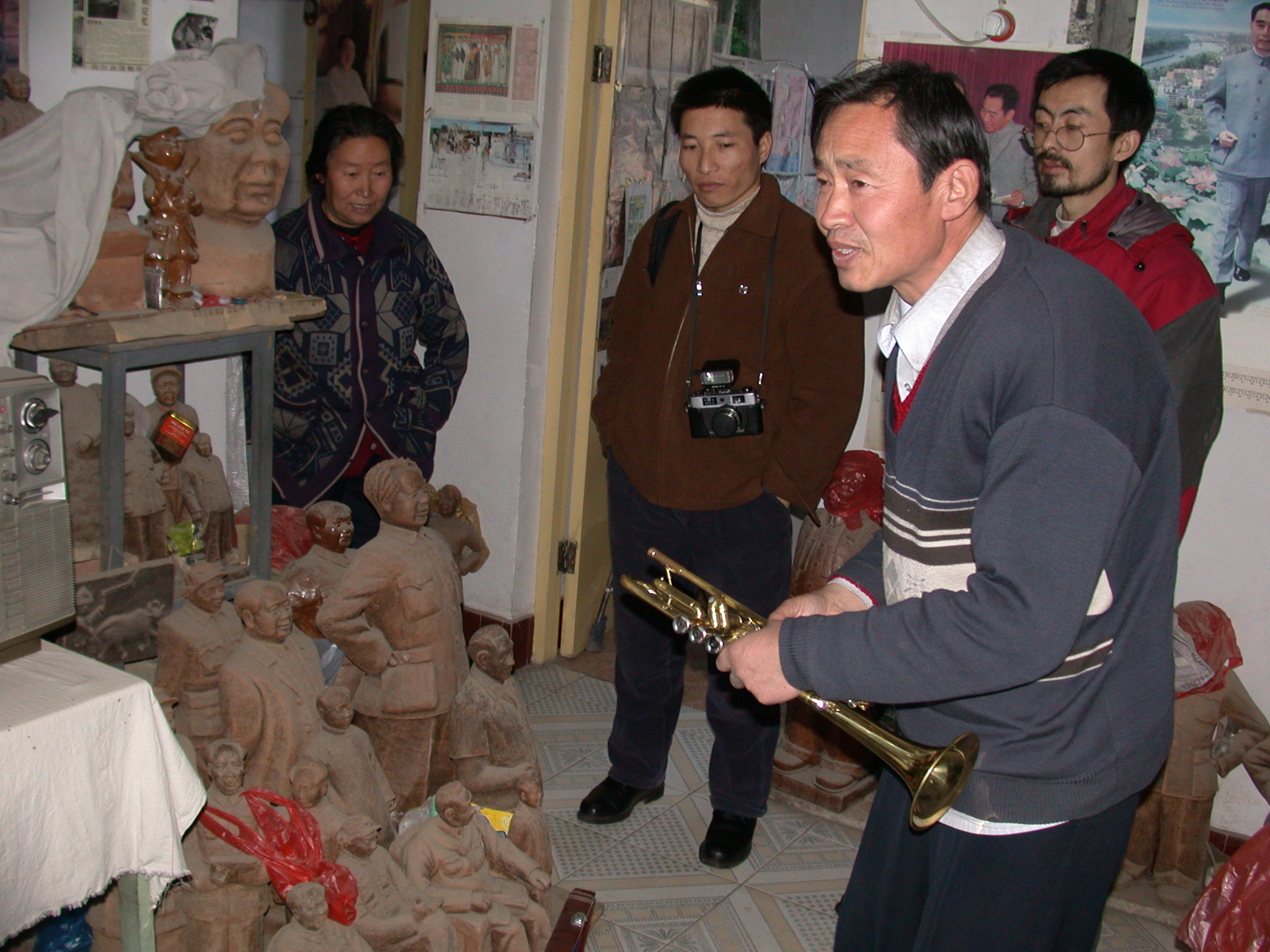 Wang Wenhai showing sculptures at his home studio
Wang Wenhai showing sculptures at his home studio
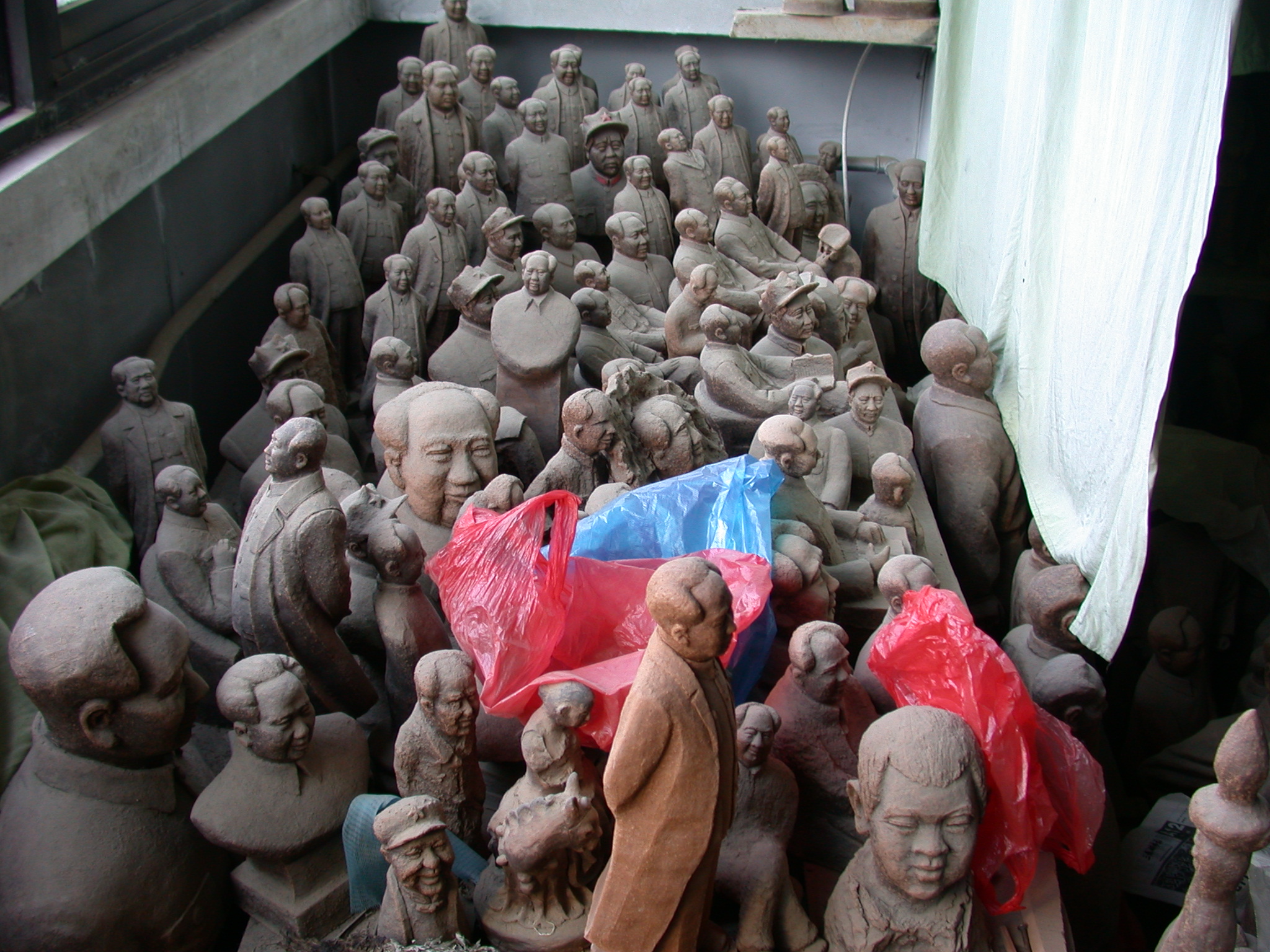 Wang Wenhai’s clay statues of Mao Zedong
Wang Wenhai’s clay statues of Mao Zedong
Wang Wenhai was a guide in the Yan’an Revolutionary Museum. He has been talking about Chairman Mao his entire life. Inspired by artists who had visited the museum, he began to create statues of Chairman Mao, which exemplify his knowledge about and devotion to Chairman Mao and his worship, memory and obsession of the era. He mastered the craft and sculptural language of the folk art of northern Shaanxi folk art by himself. His works fill his studio (formerly Zhang Side Memorial Hall) and home. In his art, he lives with Chairman Mao. Wang Wenhai is a highlight of the latter part of the Long March. His association with the Long March began over a year ago. One of his projects was in collaboration in Beijing with Sui Jianguo, a famous sculptor and participant of the Long March.


